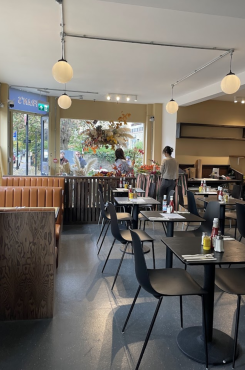The hospitality sector has been one of the hardest hit by the coronavirus induced economic downturn. The Coronavirus Job Retention Scheme (CRJS) was announced by Chancellor Rishi Sunak as a way of assisting employers to retain workers during this critical period.
Here, Howard Kennedy’s Lydia Christie answers five frequently asked questions about the CJRS.
1. Can employees accept and perform other work for another employer whilst they on furlough?
Yes they can, provided that it is permitted in their employment contract.
The Government’s CJRS guidance clarifies that furloughed employees may work for another employer whilst they are on furlough. The other employer must not be linked or associated with the organisation which has put the worker on furlough.
Casual workers and/or part-time employees may already have a contractual right to work for other organisations. Employees who are not contractually permitted to work for other employers may seek consent from their employers to enable them to do so. If consent is to be given, employers should consider whether, and if so what kind of, conditions may be required, for example, to prohibit working for a competitor whilst on furlough, or to prohibit work which may pose a risk to the employee in the performance of their original job.
Both employers and employees will need to remember that the employee needs to be able to return to their original work when furlough ends. Employers should ensure this is clearly documented and understood by employees if consent is given to work elsewhere during furlough.
2. Can tips, gratuities and tronc payments be included in the calculation of wages for the CRJS?
No. Government guidance published at the end of April confirms that tips, including those distributed through troncs, are not to be included in the calculation of 80% of workers’ wages for the CRJS.
Regular wages, non-discretionary overtime, non-discretionary fees, non-discretionary commission payments and piece rate payments can be included in the calculation.
3. Can workers still take holiday during furlough, and what are employers required to pay workers when they take holiday?
Yes. Workers can still take holiday during furlough and will continue to accrue their statutory holiday allowance and, unless this is changed as agreed between the employer and the worker, any additional contractual holiday allowance. The minimum statutory holiday allowance is 5.6 weeks (28 days) per holiday year.
Businesses should pay workers their usual rate of pay when they are on holiday during furlough. Where a worker’s rate of pay varies, holiday pay should be calculated on the basis of average pay earned over the previous 52 week reference period.
Businesses can require workers to take statutory holiday during furlough. To do this, the business will need to give the worker notice that is twice as long as the length of the holiday the worker is required to take. For example, if the holiday is to be 5 days, then the business must give 10 days’ notice.
4. Can employers rotate workers on furlough?
Whilst the Government has not issued specific guidance addressing this question, the answer is most likely yes. The Government had stated that employees can be furloughed multiple times. Employers may want to rotate employees on furlough in the event that there is a reduced demand for work that requires only some workers to be present at work.
An employee must be furloughed for a minimum of three consecutive weeks to satisfy the qualifying conditions of the CJRS. Once they have returned to work the employee must be taken out of furlough and based on the current CJRS rules and guidance, the business will not be able to make a claim for employees’ wages for those employees who have returned to work.
5. Unfortunately my business is facing the prospect of making some redundancies. Can I still do this whilst using the CRJS?
The Government’s CJRS guidance for employees says that “your employer can still make you redundant while you’re on furlough or afterwards”.
Where a business proposes 20 or more redundancies within a 90 day period this will trigger the requirements for collective consultation. This requires consulting with union representatives or elected employee represents, a minimum 30 day consultation period (or 45 days if 99 or more redundancies are proposed) before the first dismissal takes effect and notifying BEIS of the proposed redundancies. There are also individual consultation requirements. Failure to comply with collective consultation obligations risks compensation awards of up to 90 days’ pay per affected employee and a failure to notify BEIS of proposed collective redundancies is a criminal offence. Businesses are advised to seek legal advice in good time before taking steps to terminate any employees’ employment in these circumstances.
Latest development: Chancellor Rishi Sunak announced on 12 May that the CRJS will be extended to the end of October, with furloughed workers continuing to receive 80% of their current salary, up to £2,500 per month. From August to October greater flexibility will be introduced to the scheme to get employees back to work. Furloughed workers will be able to return to work part-time and employers will be asked to contribute towards salaries alongside the Government. Further details on these changes are expected at the end of May.
Lydia Christie is a legal director regularly advising clients in the hospitality sector on the full range of employment law issues, both contentious and non-contentious, from recruitment through to termination of employment.
Michael Burman is a trainee solicitor in the employment team at Howard Kennedy.
Visit howardkennedy for more info



